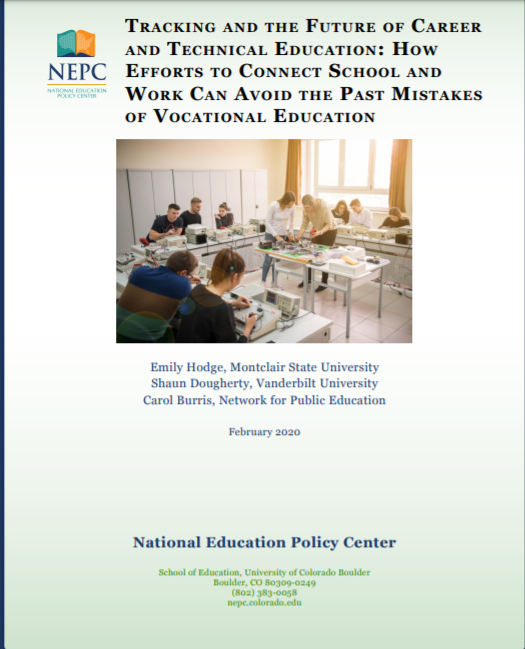This report by the National Education Policy Center examines the history of vocational education and how Career Technical Education (CTE) can avoid its past mistakes. One of the biggest critiques of CTE, formerly known as vocational education, is that it resulted in “tracking” of learners. Economically disadvantaged learners of color and immigrants were often placed on terminal vocational “tracks” that left them with limited opportunities, while White and economically advantaged learners were placed on academic “tracks,” thereby perpetuating race and class segregation and inequality. Since then, the quality of CTE has vastly improved. CTE has evolved to embed early postsecondary opportunities in career pathways and place greater emphasis on aligning pathways to labor market demand, strengthening CTE’s potential for economic mobility. This report provides recommendations to school and district leaders and policymakers to ensure that CTE programs remain equitable and incorporate CTE into school models that maintain learners’ opportunities to learn.
Career Clusters
This resource, excerpted from the full Technical Report: Modernization of the National Career Clusters Framework, aligns the 16 Career Clusters…






